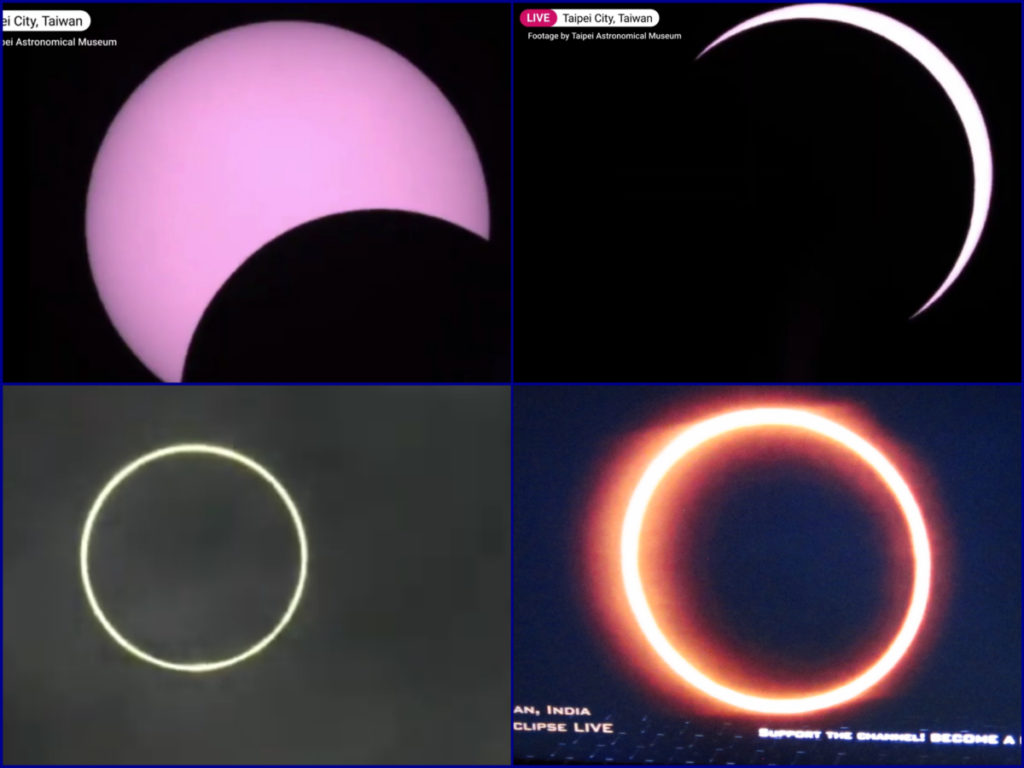Annualarity
The July 20 solar eclipse was not visible in Hawaii. The only way to view the annular eclipse live was from online video broadcasts set up along its path between Africa, Asia and a small part of the Pacific Ocean.
This solar eclipse was not total. At its height it probably reached 98% of totality, with the disc of the new moon traveling between the sunlight and earth to create a “ring of fire effect” around the disc of the sun. “Annualarity” as the phenomena is sometimes called was captured at best from locations in Tibet and India as shown in the two frames at the bottom of the four part collage below. The two frames at the top of the collage were taken from cameras set up in Taiwan. At its height the eclipse did not create a “ring of fire” effect in Taiwan. However their video was the clearest from all the feeds.

2020 has and is supposed to be a good year for eclipses, if you live in a far off place. There are four lunar eclipses and two solar eclipses. The first solar eclipse of 2020 occurred today/yesterday. The second one will happen on December 14 but be visible only in the southern hemisphere. This will be a total solar eclipse with most of it happening in the south Pacific and Atlantic oceans near South America. It will also be visible in parts of Chile and Argentina. This eclipse will not be visible in Hawaii.
All of the lunar eclipses this year are “Penumbral” in type, meaning the moon will not turn blood red as it does during a total eclipse. That said two have occurred on January 10 – 11 and on June 5 – 6. None were visible in Hawaii. The penumbral eclipse on July 4 will be visible in Hawaii but you will have to look hard to even notice it. The moon will just turn slightly darker. Another eclipse of this type takes place on November 29.
For more details on the upcoming and recent eclipse go to this link: Time & Date. | The June 20 – 21 Solar Eclipse
